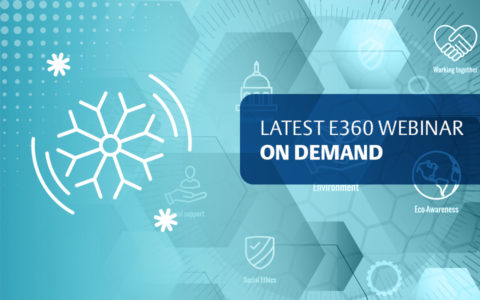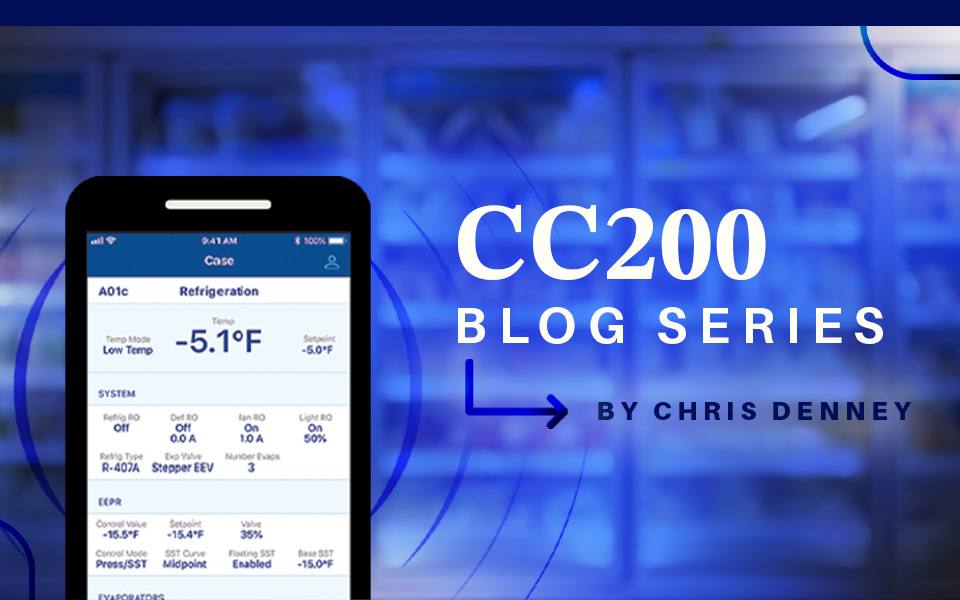[Webinar Recap] The latest in refrigerant rulemaking and safety standards

*On June 1, 2023 Emerson’s Climate Technologies business became a new standalone company – Copeland. Though our name has changed, we are building on more than a century of HVACR innovation and industry leadership, and Copeland continues to offer the same products, industry stewardship, and learning opportunities you’ve grown to trust. Information found on this webpage posted before June 1, 2023 may contain our old name or branding, but you can be at ease knowing it was created with the knowledge and expertise of Copeland.
As we near the year’s halfway point, the HVACR industry is watching closely as the next steps in the global phasedown of hydrofluorocarbon (HFC) refrigerants appear on the horizon. Emerging decarbonization targets are driving a reduction in the use of high-global warming potential (GWP) HFCs and the transition to next-generation, lower-GWP refrigerant alternatives. In a recent E360 Webinar, Rajan Rajendran, Copeland’s global vice president of sustainability, and I provided an update on the status of refrigerant regulations and their impacts on our industry. From federal- and state-led phasedown initiatives to evolving safety standards governing the use of A2L “lower flammability” refrigerants, we provided an overview of the current landscape and discussed strategies for achieving present and future HFC and GWP reductions.

Perhaps the most important driver in the U.S. HFC phasedown was the 2020 passing of the American Innovation and Manufacturing (AIM) Act and the authority it grants to the Environmental Protection Agency (EPA). The EPA is enacting a strategy that limits both the supply and demand of high-GWP HFCs per the phasedown schedule set forth by the Kigali Amendment to the Montreal Protocol.
The first step began this year with a 10 percent reduction in consumption and production of HFCs. The next step will be a 40 percent reduction, which will take effect in 2024 — a benchmark that represents the first major stepdown felt throughout U.S. HVACR sectors. Refrigerant production and import quotas are based on the GWP rating of a specific refrigerant, thereby supporting the increased production of lower-GWP refrigerants and a decrease in the availability of high-GWP HFCs. Hence, the law of supply and demand will drive up HFC prices and accelerate the transition to lower-GWP options. As we have seen, our industry is already experiencing rising HFC prices.
On the demand side, the EPA is proposing to drive down high-GWP HFC usage in new equipment by imposing new refrigerant GWP limits in commercial refrigeration and AC applications. This may lead to the restoration of its Significant New Alternatives Policy (SNAP) rules 20 and 21 and/or the introduction of SNAP proposals aimed at approving new low-GWP options as they become available for use in emerging refrigeration technologies.
To help determine what those new GWP limits will be, the AIM Act sponsors asked for industry input via petitions, several of which the EPA has already taken into consideration. The EPA is currently working on drafts of proposed rulemaking, which we hope to see yet this year.
The EPA’s strategy for limiting HFC demand also applies to the servicing of existing equipment. This important aspect of the demand equation is primarily focused on leak reduction, verification and reporting (similar to the EPA’s Section 608 proposal, which guided previous generations of refrigerant phasedowns). The EPA is working to provide details related to HFC management, which may result in the restoration of Section 608 and/or an all-new HFC reclamation program.
HFC phasedown toolbox (direct vs. indirect emissions)
As Rajan explained in the webinar, the HFC phasedown ultimately is geared toward reducing greenhouse gas (GHG) emissions based on their direct and indirect environmental impacts. Direct emissions refer to the potential for refrigerants to leak or be released into the atmosphere; indirect emissions refer to the energy consumption of associated refrigeration or AC equipment (which is estimated to be 10 times the impact of direct emissions).
Per estimates from the Air-conditioning, Heating, and Refrigeration Institute (AHRI), 86 percent of total refrigerant use stems from refrigeration, AC and heat pump equipment. Of that, only 40 percent can be attributed to filling up new equipment, while 60 percent is used for topping off systems that have had direct refrigerant leaks.
Rajan shared that preparing for the next step change in HFC reductions in 2024 will require our industry to leverage key strategies in the HFC phasedown toolbox, such as refrigerant management and equipment design best practices. In existing systems, this will mean an increased focus on maintenance to reduce both direct leaks and the indirect environmental impacts of poor system performance and energy efficiency. Recommendations for existing systems include:
- Detecting, reducing, and eliminating refrigerant leaks
- Retrofitting to a lower-GWP refrigerant in the same class (A1), with the best-case scenario of selecting equipment that is also A2L-ready
- Recovering and reclaiming refrigerant for use in service (never vent refrigerant or release into the atmosphere)
For new equipment, Rajan recommended using the lowest possible GWP alternative and adopting emerging refrigeration system technologies that leverage lower refrigerant charges. As has been the case with other lower-charge options — such as self-contained, R-290 systems — the end goal is to achieve maximum system capacity using a minimum amount of refrigerant charge.
For both new and existing equipment, it’s critical to always maintain all components, equipment, and systems in accordance with optimal design conditions, including during installation, commissioning and normal operation. Doing so will improve system energy efficiency and performance while minimizing indirect impacts. By implementing these strategies on new and existing equipment, we believe our industry can achieve HFC reductions below the 2024 phasedown — as well as the 70 percent reduction scheduled for 2029.
A2L emergence, safety standards and state-led initiatives
Achieving the needed GWP reductions will require the use of emerging A2L refrigerants with a “lower flammability” rating. These alternatives — also likely to be among those soon to be approved by the EPA — have been the subject of rapidly evolving safety standards and building codes designed to enable their safe use in commercial refrigeration. From a refrigerant landscape point of view, Rajan explained which A2L refrigerants are being developed and how they compare to their HFC predecessors in terms of GWP and capacity ratings.
I also provided an overview of the regulatory activities taking place within states in the U.S., including the latest California Air Resources Board (CARB) proposals, decarbonization actions in New York and Washington as well as those being proposed by the U.S. Climate Alliance. Many of these state-led activities represent regulatory approaches that are not only more aggressive than the AIM Act’s proposals, but they would also lead to a potentially more complex patchwork of regulatory compliance from state to state — a factor that some governors have recognized as inferior to the adoption of a standardized federal approach.
To learn more about making a successful HFC phasedown, emerging A2L alternatives and the refrigerant rulemaking landscape, please view this webinar.

Industrial Heat Pumps Deliver Sustainability, Lifecycle Benefits in Food and Beverage Industry
by Grant Kovac | Solutions Spotlight
The food and beverage industry faces increasing pressure to reduce scope 1, 2 and 3 emissions. In...

10 Innovations Transforming Retail Operations
by Andre Patenaude | Solutions Spotlight
*On June 1, 2023 Emerson’s Climate Technologies business became a new standalone company –...

Simplify Refrigerated Case Servicing and Troubleshooting
by Chris Denney | Solutions Spotlight
*On June 1, 2023 Emerson’s Climate Technologies business became a new standalone company –...
The post [Webinar Recap] The Latest in Refrigerant Rulemaking and Safety Standards appeared first on Copeland.